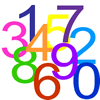Skip over navigation

Introductory Video
Spots and Measles
Do Rare Events Happen?
The ELISA Test
Matching Criminals

Or search by topic
Number and algebra
Geometry and measure
Probability and statistics
Working mathematically
Advanced mathematics
For younger learners
Probability and Evidence

Probability and Evidence
An understanding of probability is important in medicine, law and wider society. These problems invite you to consider some scenarios where interpreting probabilities incorrectly can have serious consequences.
Introductory Video Age 11 to 16
Age 11 to 16
An introductory video to the Probability and Evidence collection
Spots and Measles Age 11 to 16Challenge Level 


Age 11 to 16
Challenge Level 





99% of people who have measles have spots. Ben has spots. Do you think he has measles?
Do Rare Events Happen? Age 11 to 16Challenge Level 


Age 11 to 16
Challenge Level 





I'd be very surprised if I had three children all with the same birthday, but I read in the paper that it happened to one family...
The ELISA Test Age 14 to 18Challenge Level 


Age 14 to 18
Challenge Level 





In 1% of cases, an HIV test gives a positive result for someone who is HIV negative. How likely is it that someone who tests positive has HIV?
Matching Criminals Age 14 to 18Challenge Level 


Age 14 to 18
Challenge Level 





DNA profiling is an invaluable tool for the police. However, when it comes to probability, things aren't always as straightforward as they seem.
You may also like
Patterns in Number Sequences
These resources are designed to get you thinking about number sequences and patterns.

